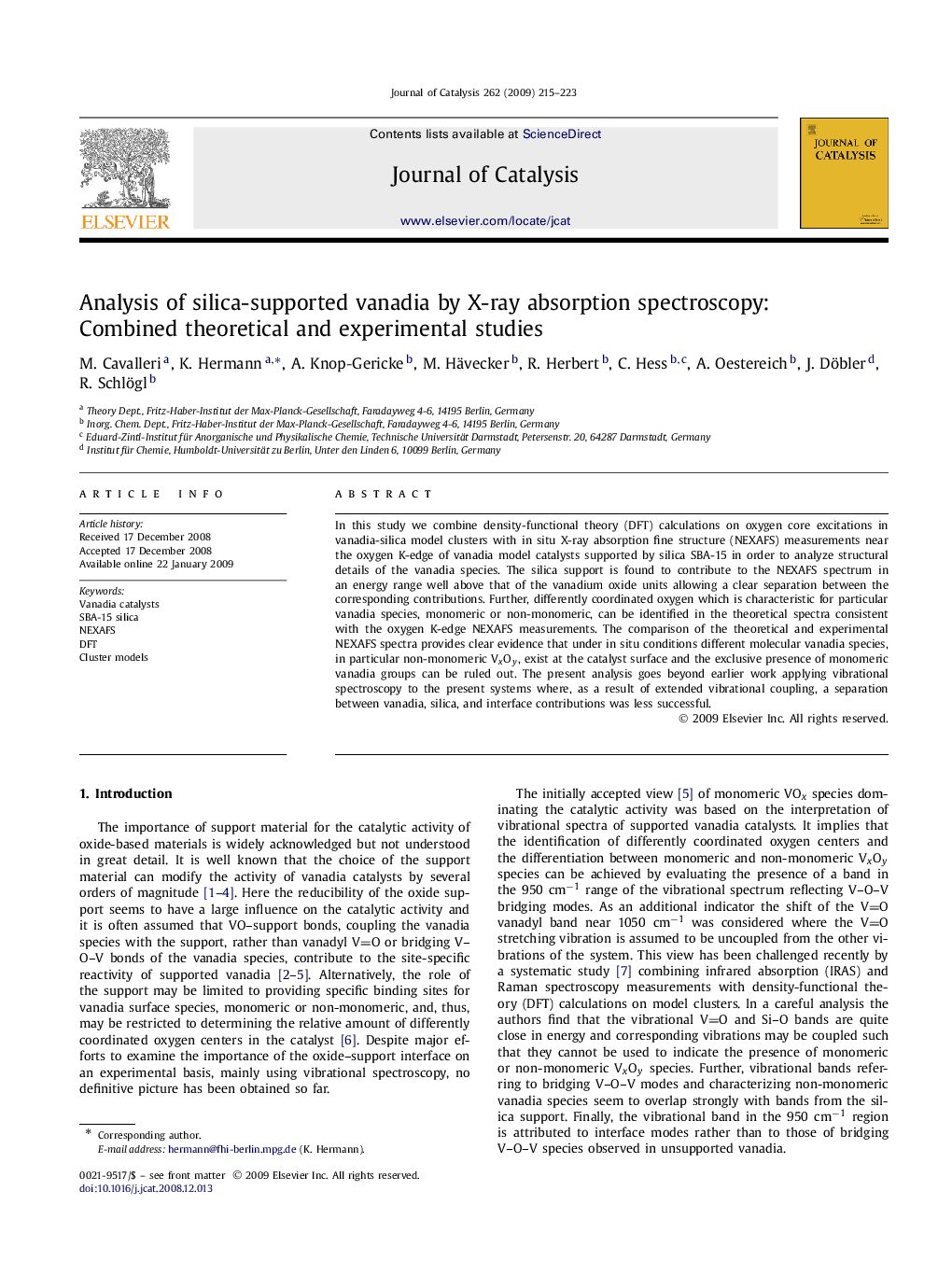| Article ID | Journal | Published Year | Pages | File Type |
|---|---|---|---|---|
| 62447 | Journal of Catalysis | 2009 | 9 Pages |
In this study we combine density-functional theory (DFT) calculations on oxygen core excitations in vanadia-silica model clusters with in situ X-ray absorption fine structure (NEXAFS) measurements near the oxygen K-edge of vanadia model catalysts supported by silica SBA-15 in order to analyze structural details of the vanadia species. The silica support is found to contribute to the NEXAFS spectrum in an energy range well above that of the vanadium oxide units allowing a clear separation between the corresponding contributions. Further, differently coordinated oxygen which is characteristic for particular vanadia species, monomeric or non-monomeric, can be identified in the theoretical spectra consistent with the oxygen K-edge NEXAFS measurements. The comparison of the theoretical and experimental NEXAFS spectra provides clear evidence that under in situ conditions different molecular vanadia species, in particular non-monomeric VxOy, exist at the catalyst surface and the exclusive presence of monomeric vanadia groups can be ruled out. The present analysis goes beyond earlier work applying vibrational spectroscopy to the present systems where, as a result of extended vibrational coupling, a separation between vanadia, silica, and interface contributions was less successful.
Graphical abstractTheoretical/experimental O K-edge NEXAFS spectra for vanadia on SBA-15 show that different non-monomeric vanadia particles exist at the support surface; the presence of only monomeric species is excluded.Figure optionsDownload full-size imageDownload high-quality image (35 K)Download as PowerPoint slide
